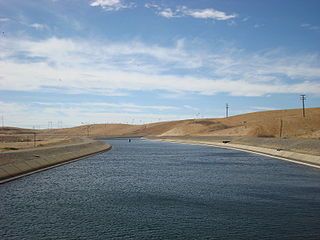High-Efficiency, Power-Dense Electric Motors for Moving Large Volumes of Water
I wrote this post yesterday, when I was a few minutes early for the start of an event at the downtown Los Angeles office of the Nature Conservancy. I had come into the city for four separate meetings, of which this was my third.
The day started with an update from my friends at Green Motor Company, a group that is developing a low-cost and power-dense electric motor. The application that may come immediately to mind could be electric transportation, but, believe it or not, that’s not as attractive as one might have thought. As my friend Tom Gage, former CEO of AC Propulsion (developers of the electric drive train for the BMW Mini E) told me, “You could have a 99.9% efficient motor that’s the size and weight of a ping-pong ball, and you tell me I could have it for free, and that wouldn’t mean too much in this space.” He was, of course, referring to how incredibly important the size, weight, and cost of batteries are in comparison to everything else.
So, if not EVs, exactly what? Well, there are many hundreds of applications in our homes, office buildings, and industrial settings where the cost, size, weight, and efficiency of motors are extremely important. Think of pumps, especially for large volumes of water. Of course, this may be more obvious to me as I live in California, and such a percentage of our overall energy expenditure is made in moving water from one place to another. Water-related energy use in California consumes approximately 20 percent of the state’s electricity, and 30 percent of the state’s non-power plant natural gas (i.e. natural gas not used to produce electricity).
In any case, good news from Green Motors, and more to come, I’m sure.


I never realised that moving water around could take up such a high proportion of the electricity consumption of a place like California.
The fact that 20% of the state’s electricity consumption and 30% of non power plant natural gas relates to moving water tells me two things.
1. Water efficiency can have a huge impact on overall climate changing emissions – less water used means less water pumped, treated for consumption and treated again post use (sewerage). Simple measures such as placing aerated or “shower head” inserts in taps (faucets), and selecting water efficient laundry and dish washing equipment can make a huge difference to water consumption.
and
2. That wherever the time of pumping is not critical, there is a massive opportunity to damp down un-predicted variations in electrical supply and demand such as from wind and solar power by carrying out as much as possible of the pumping when more power is generated than expected or when power is in excess, and as little as possible at other times. In this way, a large increase in wind and solar power can potentially be accommodated without upsetting the stability of the power grid, and without the high cost of using extra peaking plant or battery storage.
Both are astute observations. In particular, it’s a shame that most of us here have grass on lawns that we need to irrigate; there is a growing but still small movement to go to landscaping that is natural to this semi-desert. I know I’ll level plant another blade of grass here.